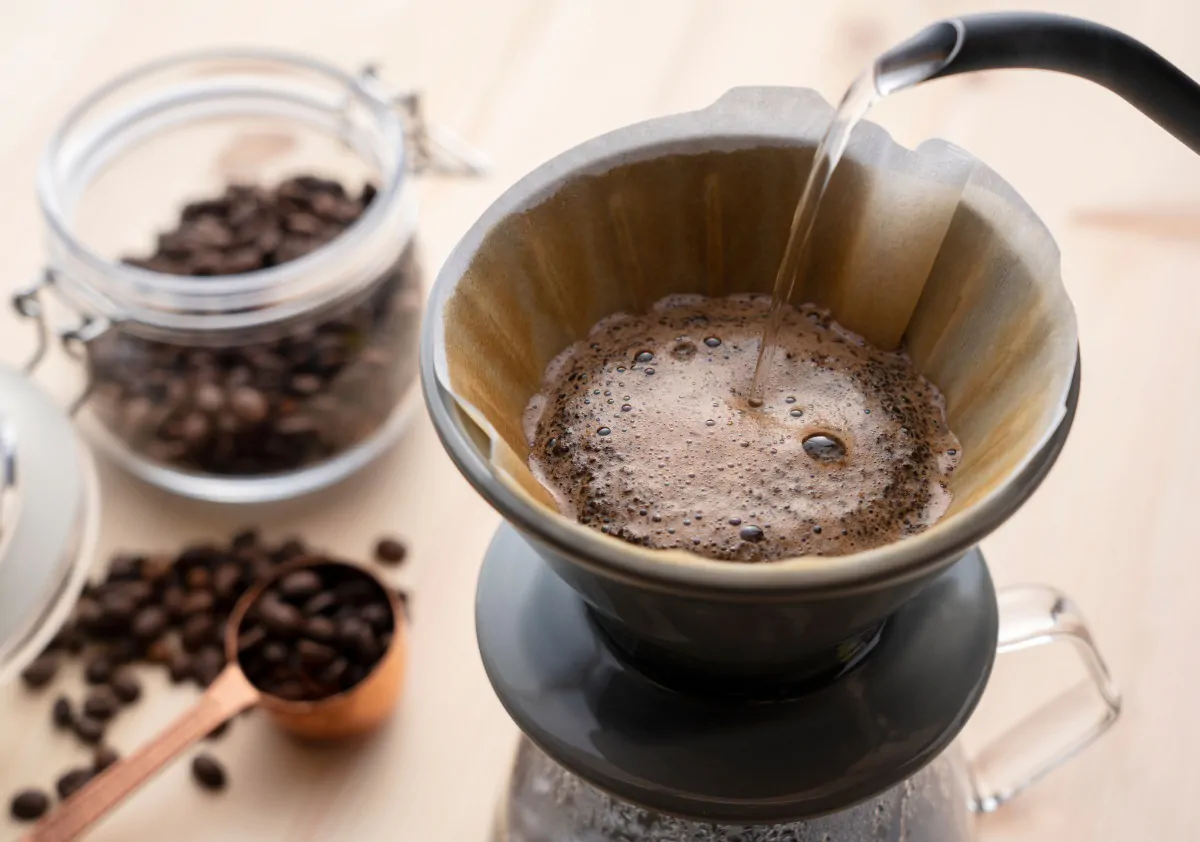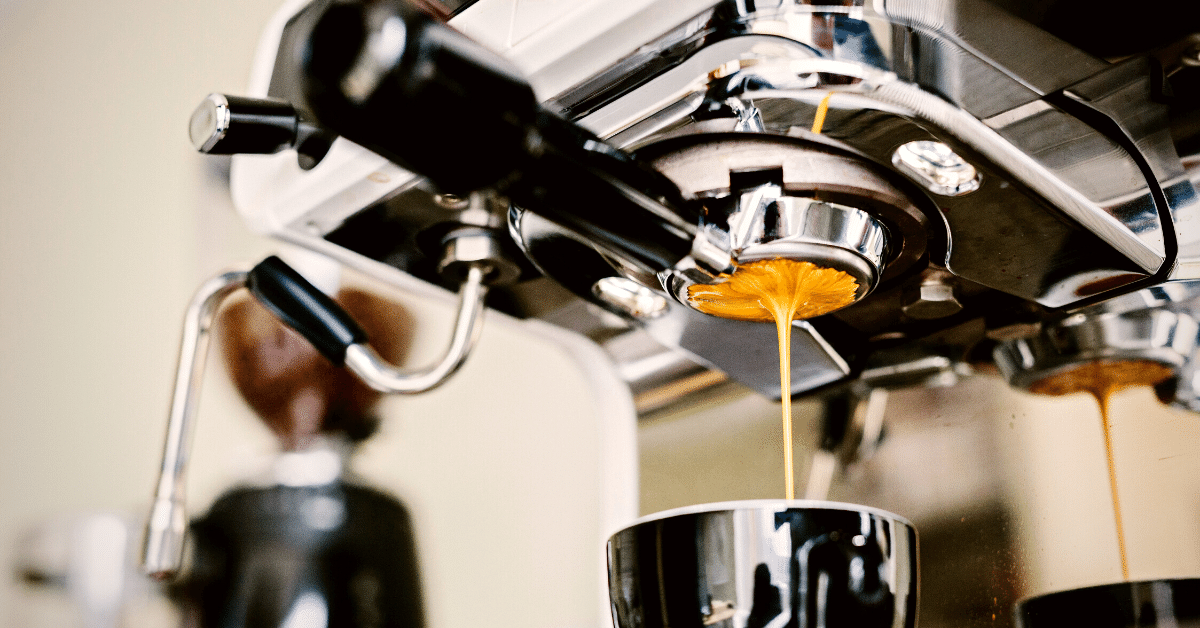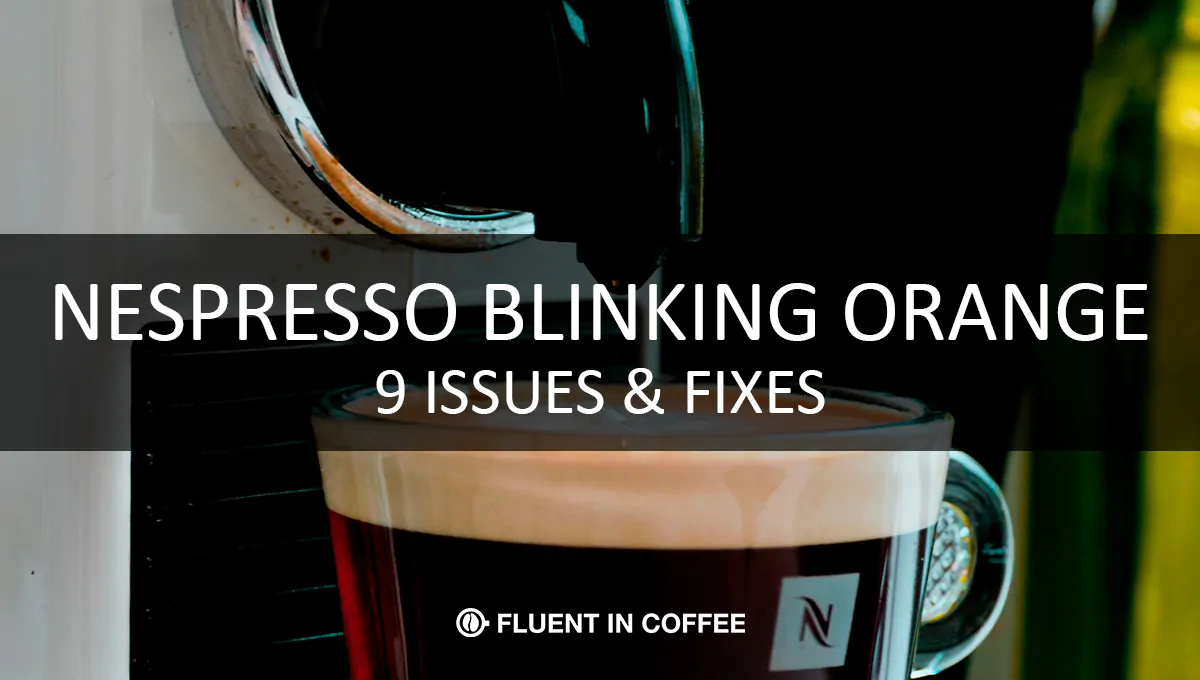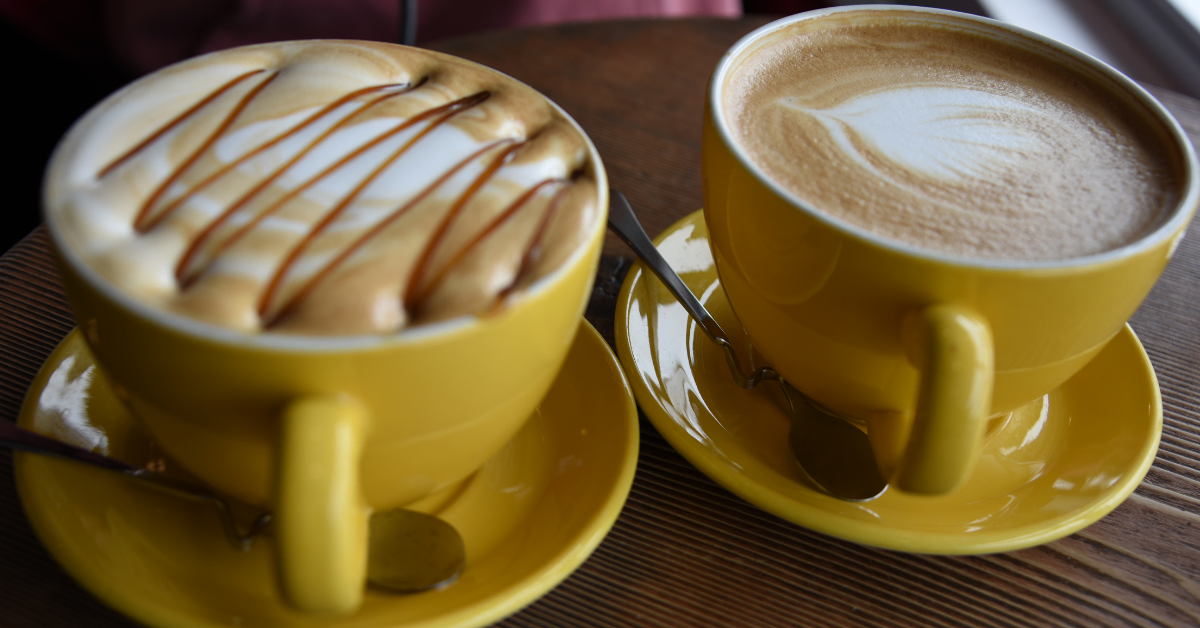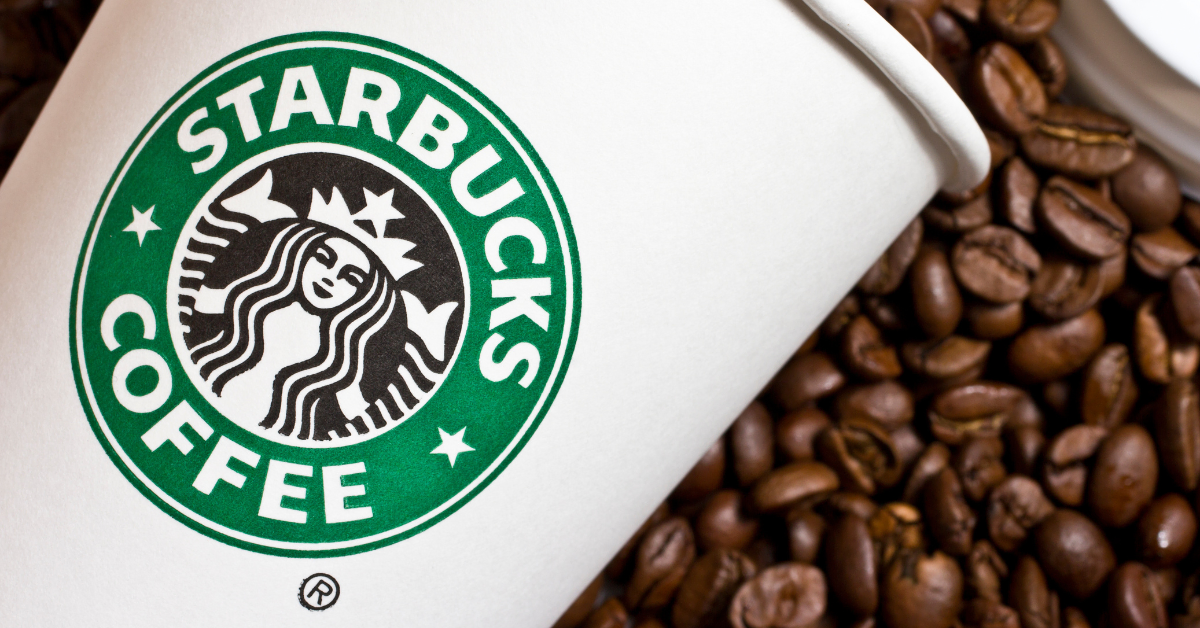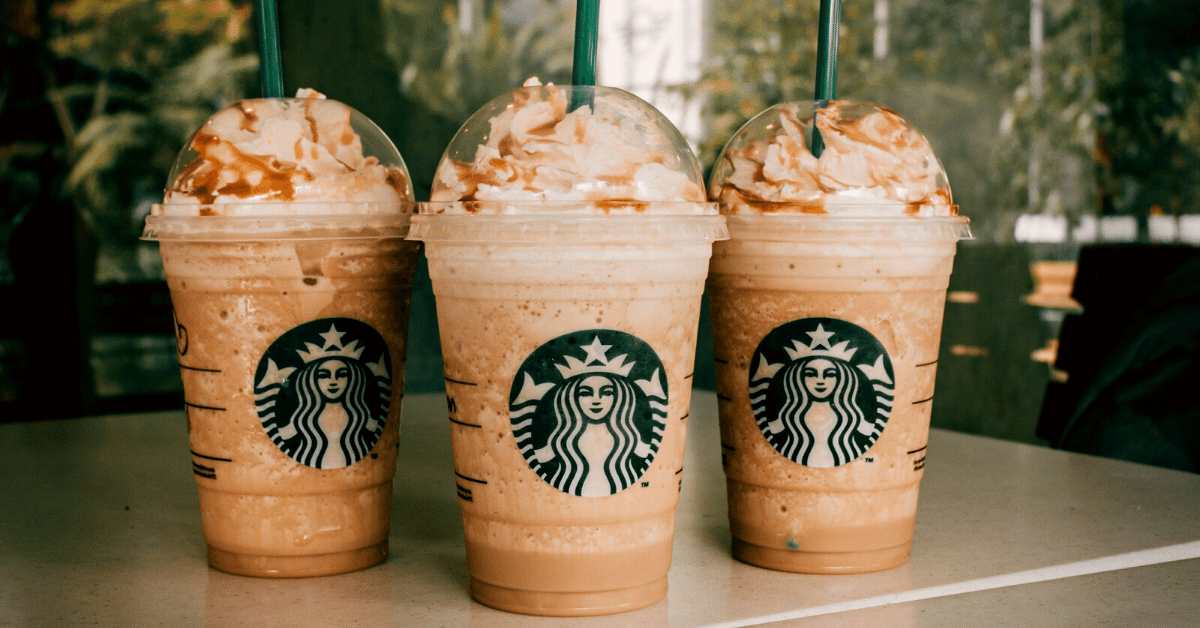The pour over method is one way to brew an intricate and intriguing morning cup. Read on to learn what is pour over coffee and to know about its process.
Brewing coffee has become quicker with machines that brew more than a cup at a press of a button. While it is fast, it isn’t exactly something you would consider inspiring. That’s what makes pour over coffee endearing to us coffee lovers.
But what is pour over coffee? In essence, it’s filtered coffee brewed by pouring hot water over coffee grounds. But it’s much more than that. The pour over method unravels deep layers of coffee flavor that other fast methods cannot.
As a coffee enthusiast myself, I learned everything there is to know about this fantastic brewing method. Today, I will share it all with you: from the history of pour over to the best brewing technique.
Once you grasp the technique, check out our guide to the best coffee for pour over, pick your favorite beans, and start brewing!
So, without further ado, let’s dive in!
The History of Pour Over Coffee
There are several accounts of how the pour over coffee process came to be. The most popular, however, is the story of Amalie Melitta Bentz. Bentz was a German woman who patented the pour over coffee method we know today.
Disappointed in the flavor of more common coffee brewing methods, she created a pour over coffee filter using book paper and a metal pot. This new idea took off several years later and eventually evolved into the pour over coffee brewing process enthusiasts know and love today.
Melitta continues to be a household name in the pour-over industry, providing quality coffee beans, cones, and coffee filters across the globe.
Tools You Need To Brew Your Own Pour Over Coffee
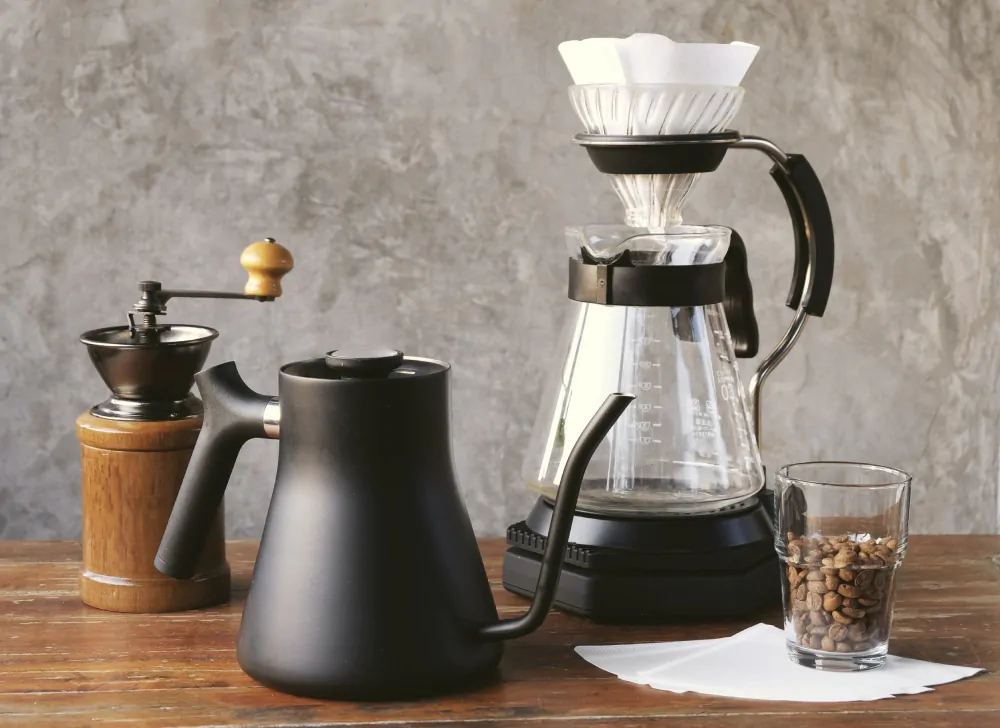
While you won’t use a coffee machine to make yourself a cup of pour over coffee, you will need a handful of tools.
Coffee Grinder
First, you must have a coffee grinder — at least if you buy whole coffee beans instead of ground. A burr grinder might be the best option, as pour over coffee requires a medium-coarse grind. That is because a burr grinder allows better control over how coarse your coffee grounds can be.
Additionally, this will enable you to play around with grind size and open new avenues to pour over coffee flavors you might like.
Also worth noting is that grinding beans on your own instead of buying them ground from the get-go results in a fresher brew overall. Here’s our guide to the best coffee grinder for pour over you can use for your brewing experiments.
Alternatively, those who would rather not spend money on a brand-new grinder can grind beans using other household appliances. A food processor can work, or perhaps a blender. If you don’t mind using a bit of elbow grease and doing things the old-fashioned way, you can also use a manual grinder or even a mortar and pestle.
You can check out our list and find the best manual coffee grinder to help you choose.
Coffee Filters
A coffee filter is another important tool in making a perfect cup of pour over coffee. A coffee filter separates your hot water and coffee ground toward the end of the extraction process. There is a wide variety of coffee filters to choose from — everything from a paper filter made from abaca to cloth-based ones and even reusable stainless steel coffee filter products.
They also come in different shapes, like flat-bottom ones and cones. Still not sure about what brand of coffee filter you should buy? This list of the 11 best coffee filters should help!
Scale
You will also need a scale to measure your coffee beans and grounds. While any scale will do, digital kitchen scales are ideal as they are more precise and much easier to use. There is also a wide variety of coffee scales you can buy online at affordable prices, so choose the one you find the most convenient to operate.
If you’re interested, you should read up on the best scales for making pour over coffee. Not eager to throw money at a brand-new scale? You can always use a good spoon or trusty measuring cup (provided you’re precise when using them).
Pour Over Coffee Brewer
Of course, you will need to have a pour over coffee brewer. Some of the most popular brewing devices in this category include:
- Kalita Wave 185
- Chemex
- Oxo Brew
- Hario V60
You should consider a few factors before choosing a pour over coffee brewer. These include a product’s compatibility with your coffee filters and if the one you pick is compatible with your carafe or a mug of choice.
The design of your pour over coffee maker is also something you need to consider. A pour over coffee dripper with a larger opening at the bottom will perform and extract flavors differently than one with a smaller opening.
The aesthetic of a pour over coffee maker is also important to some enthusiasts. After all, you want one with an eye-catching design if you plan on proudly displaying it on top of a countertop or as part of your coffee station at home.
Kettle
Lastly, while not entirely necessary, consider investing in a kettle. While any will do for most people, the design and quality of a kettle can also affect the temperature of the water you use and your pouring technique.
If you are choosing a kettle, we recommend opting for one with a gooseneck design, as this will help you keep your pouring technique precise with its spout. But any other kettle will work, too.
Knowing The Right Roast For Your Pour Over Coffee
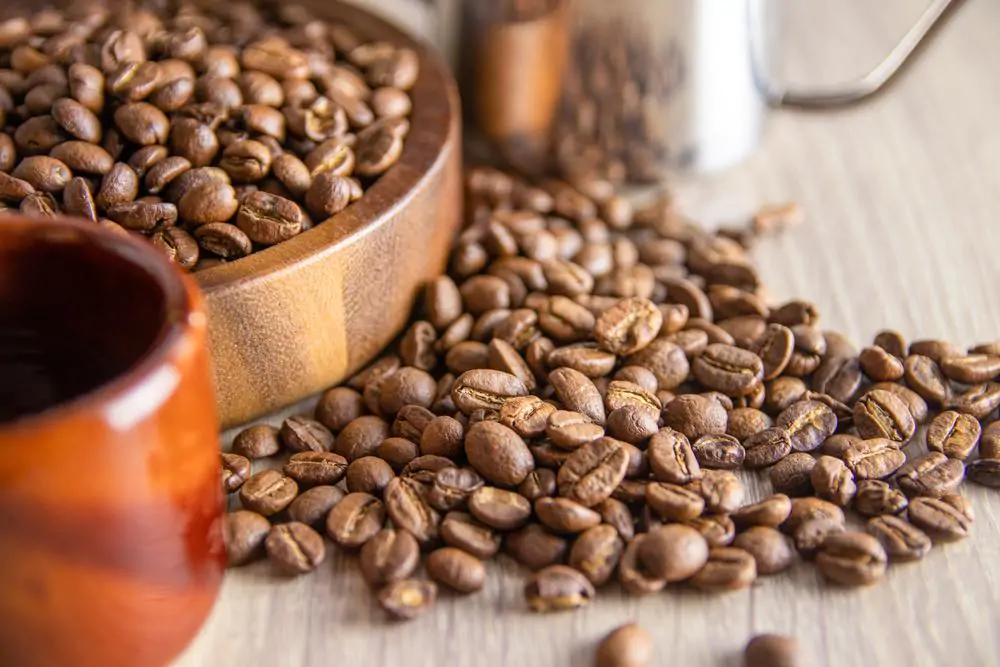
Generally, it is recommended that baristas use light to medium coffee roasts when using the pour over method. This is because the pour over method has a slower extraction time compared to others, and this captures more complex flavors and notes often found in light to medium roasts.
Light Roasts
Light roasts are the densest and most acidic roast available and usually contain the most caffeine. Because light roasts have not spent as much time in the roasting process as medium and dark ones, they can maintain more unique flavors that other options aren’t able to. Here are some of the best light roast coffee brands worth checking out.
Medium Roasts
Medium coffee roasts, meanwhile, have spent more time in the roaster and boast a balanced caffeine content and flavor profile — a nice middle ground between light and dark alternatives. Think you’ll prefer a medium roast? Read our list of the best medium roast coffee brands to help you choose!
Single-Origin Beans
Try to get your hands on a roast that uses single-origin beans if possible. This way, you can be sure that the coffee you are brewing will feature the flavors and characteristics of the area where the beans were grown.
And since we are on the topic of beans, it is also important for you to remember to use them as soon as you open the bag. The shelf life of coffee beans and coffee grounds is finite, and the longer you leave them exposed, the less fresh and flavorful they will be.
D.I.Y Coffee Roasting
Coffee enthusiasts who are really looking to customize their brewing experience can go as far as to roast their own beans! If this is a path you think you’re willing to follow, check out our step-by-step guide about how to roast coffee beans at home.
Making Your Pour Over Coffee In A Nutshell
The short version? You pour hot water into a filter that contains your coffee ground and let the final product drip into your chosen container. Of course, there are still some steps I recommend you follow.
Grind Your Beans
Good ground is vital to making good coffee. Regarding grind size, medium-coarse coffee grounds are typically used when making pour over coffee. The size of the grounds will determine how quickly your hot water will pass through the ground.
That means that the coarseness of your coffee grounds will also determine exactly how long your extraction and brewing process will take and how your coffee’s flavor turns out.
The medium-coarse size gives the water ample time to seep through the coffee grounds and extract the flavors as it drips into your cup. If it’s too coarse, the water will just pass through it, increasing the chance of it being under-extracted. Too fine, and the grounds will act as a filter that slows the water down and extracts too much of the coffee’s flavor, leading to over-extraction and a bitter cup once it drips down.
Pre-Wet Your Coffee Filter
Translation: Pour some hot water onto your coffee filter before placing your coffee ground. That is also called pre-heating your filter.
It’s a very easy step to overlook, but baristas should still take the time to perform it. The reason is that pre-wetting your coffee filter can help get unwanted tastes or contaminants out before you start your brewing process. Oh, and make sure to dispose of the leftover water afterward, as you don’t want this mixing with your final product.
Place Your Coffee Ground Into The Brewer
The recommended coffee-to-water ratio is 2 tablespoons of ground for every 6 ounces of water. Make sure to measure your grounds using a digital scale to keep your pour over coffee formula accurate. You can also experiment with your ratio of coffee to water if you want to play around with the strength and flavor of your brew.
On another note, you can brew different batches and replace your filter if you want to pour over a different type of coffee ground.
Regarding your water temperature, it is recommended that you heat your water to around 200 degrees Fahrenheit.
Start Pouring
It is easy to get ahead of yourself if you are a beginner and just start pouring all of your kettle’s contents into your ground — but refrain from doing this as it may compromise the coffee flavor.
Brew time is important! The proper way to pour water is a little at a time in a circular motion to ensure you have even extraction and to allow your coffee to bloom. Coffee grounds contain carbon dioxide, which can mess with the pour over brewing process if it is done in a hurry. And, like I said, using a gooseneck kettle is an ideal way to ensure precision while you pour.
Make sure all of your grounds are soaked each time you pour. Just as importantly, remember to pause for a brief moment after each pour to allow all of your ground’s flavor to be extracted. Oh, and don’t forget to enjoy the pour over coffee brewing process, too! You might just find it therapeutic!
Enjoy Your Pour Over
Once your coffee is done dripping into its container, remove your pour-over coffee brewer and enjoy a perfect cup of coffee. Remember: Practice makes it perfect! So keep trying different formulas and techniques until you find the exact brew and flavors you’re after!
If you want to liven your pour over coffee recipes up a bit, you may want to consider adding some coffee sweeteners or syrups to your go-to formula. These additives can go a long way toward personalizing your pour over coffee experience. You can read our list of the best coffee syrups to learn more.
Try An Iced Pour Over Coffee
If you want a caffeinated drink to help you cool off, add some ice to the standard pour over coffee formula. All you need to do is add ice to your carafe or mug before you begin pouring. Other than that? It’s the same process, with the same pour-over brewer and filter.
The Difference Between Pour Over And Regular-Brewed Coffee
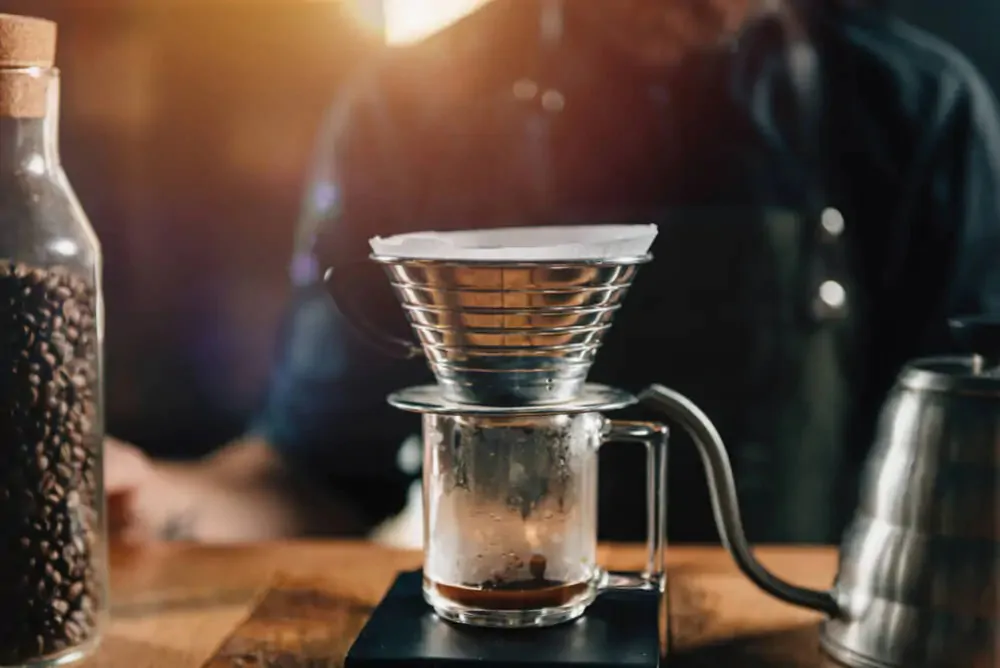
Compared to regular brewed coffee, pour over coffee gives you more control over the temperature, flavor, amount, and strength of your coffee. That makes the pour over method a favorite among coffee enthusiasts over the regular brewing process, as it allows them to produce a drink that caters to their exact taste.
Another reason to consider the pour over process over using a regular drip coffee maker is the level of care that goes into the process. Many coffee lovers find the feel of pouring their own water to produce coffee therapeutic and calming. You could almost say that making pour over coffee is a ritual that requires at least some level of focus.
And lastly, the taste! The pour over method produces a cleaner cup of coffee compared to a regular brewed coffee dripper. Depending on the coffee grounds you use, you may also have a more flavorful end product.
That doesn’t mean a regular coffee brewing machine doesn’t have its advantages, though. One is that you can simply leave your machine to do all the brewing for you at the press of a button. That is something that many consumers — especially those who are always in a hurry or multitasking — find convenient. In fact, this can be a deal-breaker for some buyers.
If you are looking for other ways to make coffee without using a brewing machine, there are a handful of other coffee brewing methods you can look into. These include:
- French press
- Drip Coffee
- Aeropress
- Immersion brewing
- Espresso machine
Interested in trying your hand at these alternatives? Be sure to check out this guide on the different kinds of coffee brewing methods you can try at home.

